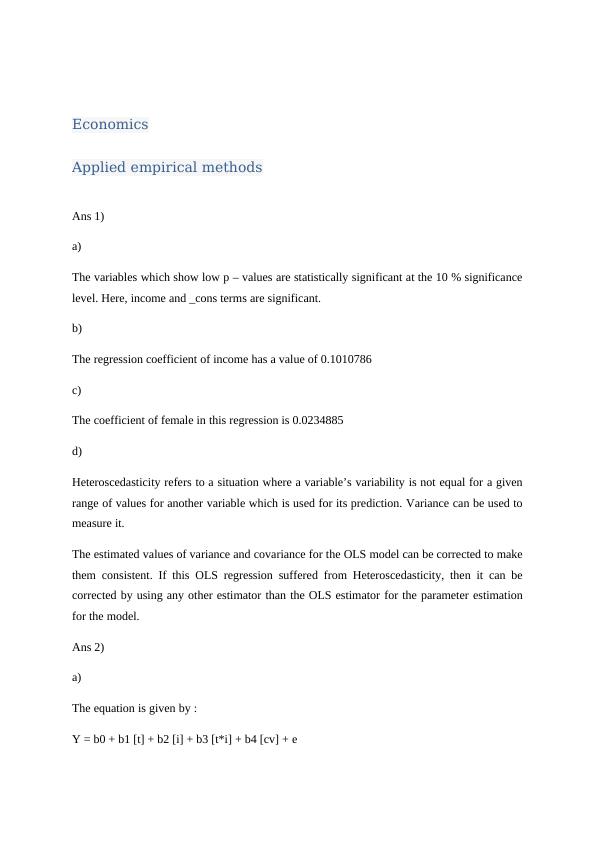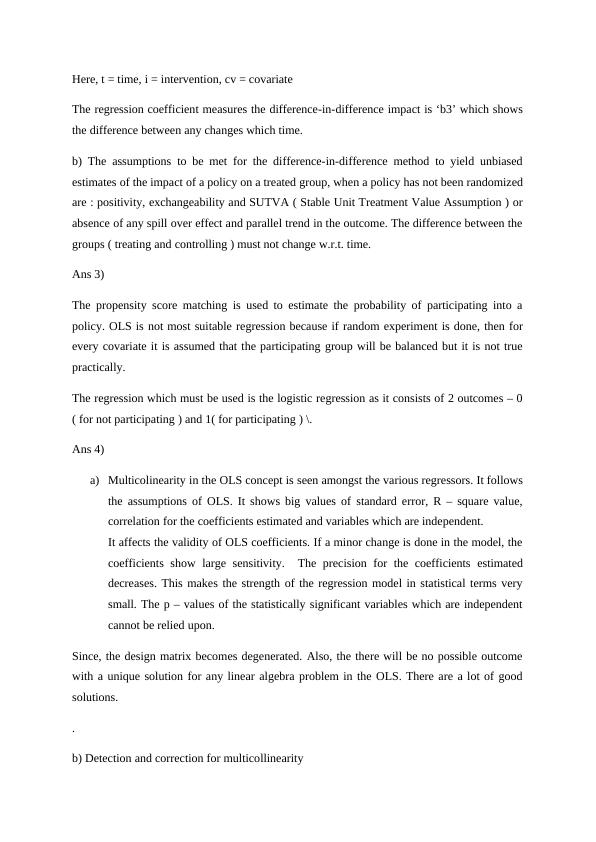Economics. Applied empirical methods. Ans 1). a). The v
This is an exam for the course BUSM112 Applied Empirical Methods at Queen Mary University of London. The exam covers topics such as hypotheses testing, OLS model, model diagnostics, addressing endogeneity, logit, probit, propensity score matching, panel data fixed effects vs. random effects, difference-in-difference within estimator, time series and stationarity, cointegration, ARCH and GARCH models, and forecasting and ARIMA models.
Added on 2022-08-01
About This Document
This is an online exam, it will be released on 21 april at 10am and you have 2 hours 30mn to get it solved. you should use quotation and in text reference for plagiarism. i will be sending e-books which has everything and my logins to get access into slides that will helps for answers and all the resources you need to answer the test AND GET ONLINE TO PASS IT ON 21 APRIL; 10AM. Also i will send you the mock exam to have an idea about the exam sample.
Economics. Applied empirical methods. Ans 1). a). The v
This is an exam for the course BUSM112 Applied Empirical Methods at Queen Mary University of London. The exam covers topics such as hypotheses testing, OLS model, model diagnostics, addressing endogeneity, logit, probit, propensity score matching, panel data fixed effects vs. random effects, difference-in-difference within estimator, time series and stationarity, cointegration, ARCH and GARCH models, and forecasting and ARIMA models.
Added on 2022-08-01
End of preview
Want to access all the pages? Upload your documents or become a member.


